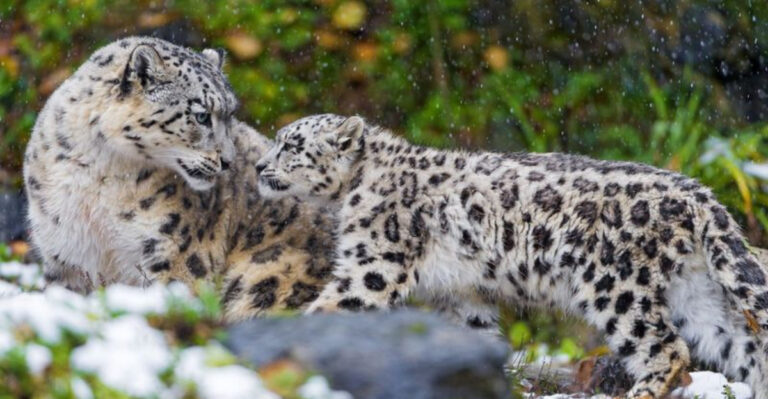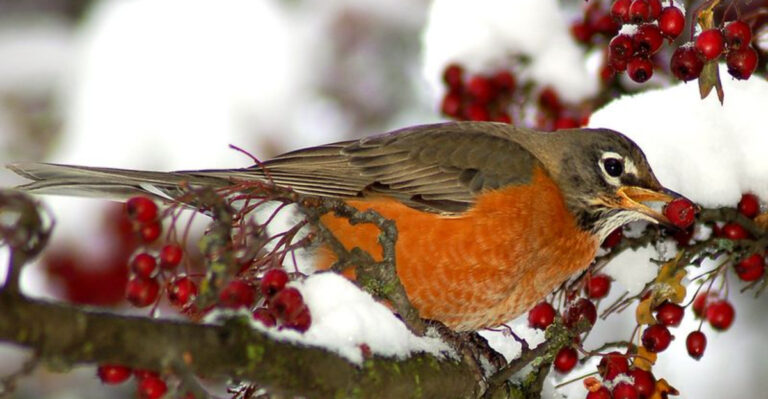Pig Teeth: Everything You Didn’t Know
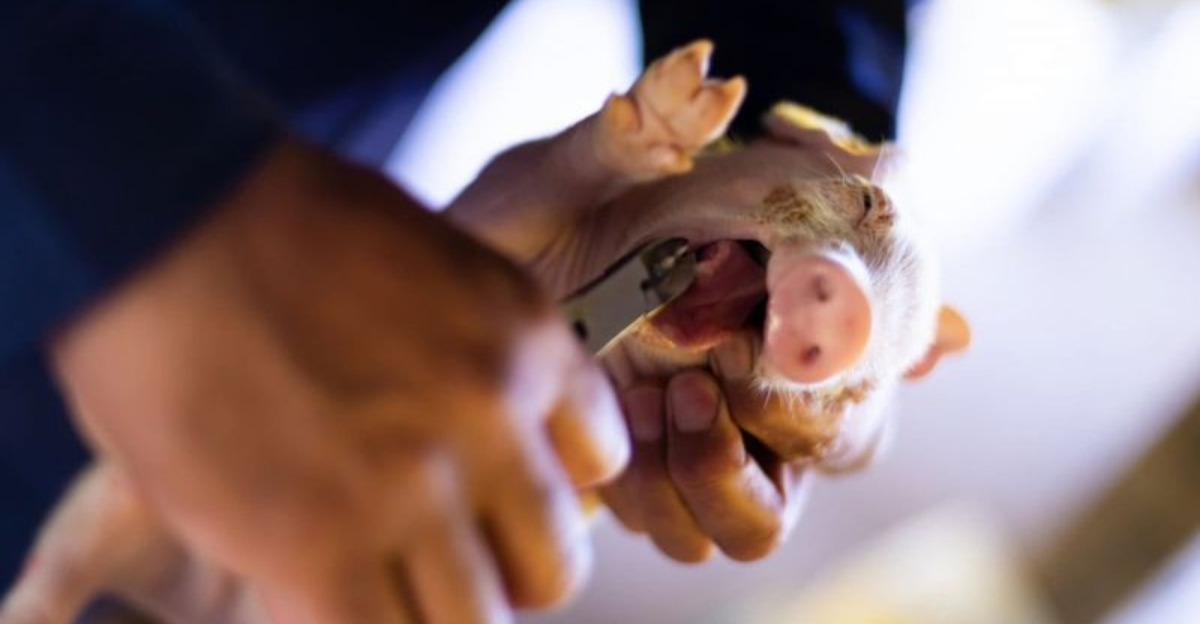
Pigs might seem simple farm animals, but their mouths hide fascinating secrets! From razor-sharp baby teeth to impressive tusks that never stop growing, pig dental anatomy is surprisingly complex.
Whether you’re a farmer, veterinarian, or just curious about these intelligent animals, understanding their teeth reveals much about their evolution, diet, and behavior.
1. Pigs Are Born With Teeth

Piglets enter the world fully equipped with eight tiny but remarkably sharp teeth. These “needle teeth” include four canines and four corner incisors that can break skin with ease.
Unlike human babies who develop teeth months after birth, piglets need these teeth immediately to compete for nursing positions. Their early dental development gives them a survival advantage in large litters where milk access means everything.
2. Farmers Often Clip Piglets’ Teeth
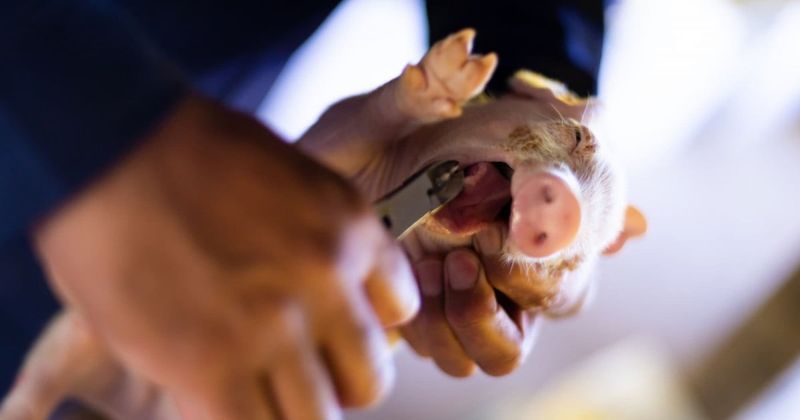
Those adorable piglets with their needle teeth can cause significant damage! Many farmers routinely trim these sharp points within the first three days of life to prevent injuries.
The practice remains somewhat controversial among animal welfare advocates. Some modern farms are moving toward selective clipping—only addressing piglets with particularly aggressive nursing behaviors rather than the entire litter.
3. Adult Pigs Have 44 Teeth
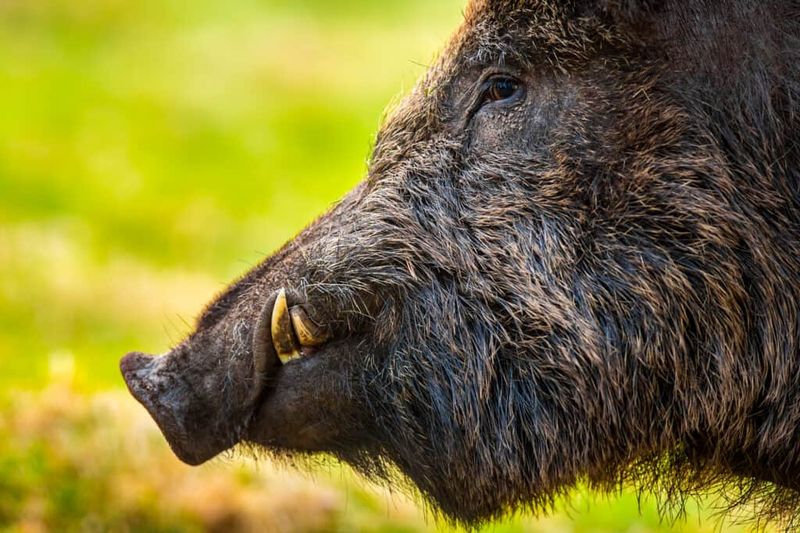
Once fully mature, domestic pigs sport an impressive dental collection totaling 44 teeth. Their mouth contains 12 incisors, 4 canines, 16 premolars, and 12 molars.
This tooth count matches that of their wild cousins and even dogs! The dental formula reflects their omnivorous heritage, allowing them to process everything from tough roots to tender fruits.
4. Their Teeth Are Designed For Omnivores

A peek inside a pig’s mouth reveals nature’s perfect omnivore design. Sharp incisors at the front grip and tear food while flattened molars at the back crush and grind tough plant material.
Their prominent canines can rip into various foods, from juicy fruits to occasional meat. This versatile dental arrangement explains why pigs thrive on such diverse diets in both wild and domestic settings.
5. Wild Boars Grow Massive Tusks
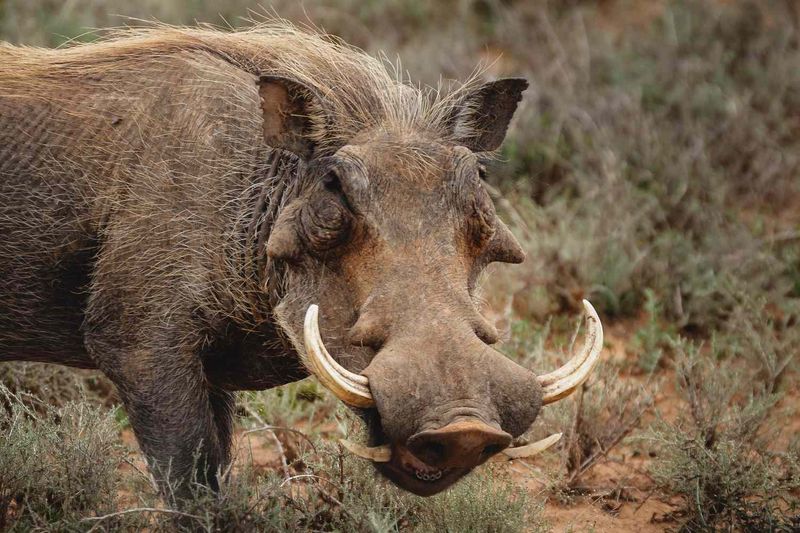
Male wild boars develop impressive curved tusks that can grow over 5 inches long! These modified canine teeth extend upward from the lower jaw and outward from the upper jaw.
The tusks never stop growing throughout the boar’s life. Older boars often sport battle-scarred tusks with worn tips and polished sides from years of fighting rivals and digging through forest floors.
6. Pig Tusks Can Sharpen Themselves

Nature equipped wild pigs with a built-in knife sharpener! When a boar closes its mouth, the upper and lower tusks rub against each other, creating a natural honing effect.
This continuous friction keeps the inner edges razor-sharp while the outer surfaces remain thicker for strength. The resulting weapons become more dangerous with age as the pig masters using these self-maintaining tools.
7. Pigs Can Develop Dental Problems
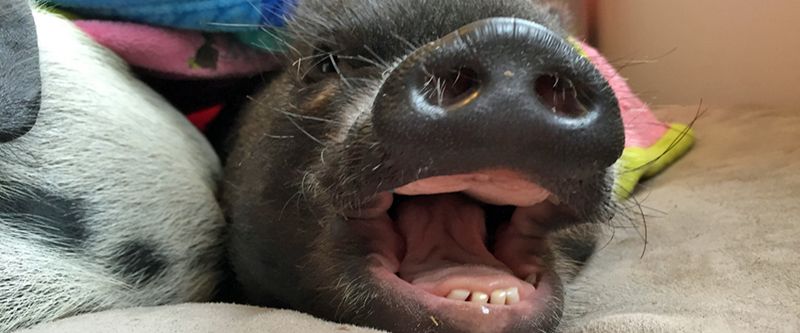
Farmyard pigs aren’t immune to toothaches! Domestic pigs commonly suffer from broken teeth, painful abscesses, and even cavities when fed sugary human food scraps.
Without proper care, these issues can lead to weight loss and serious health complications. Older pigs may develop periodontal disease similar to humans, causing loose teeth and chronic pain that affects their ability to eat properly.
8. Pet Pigs May Need Dental Care
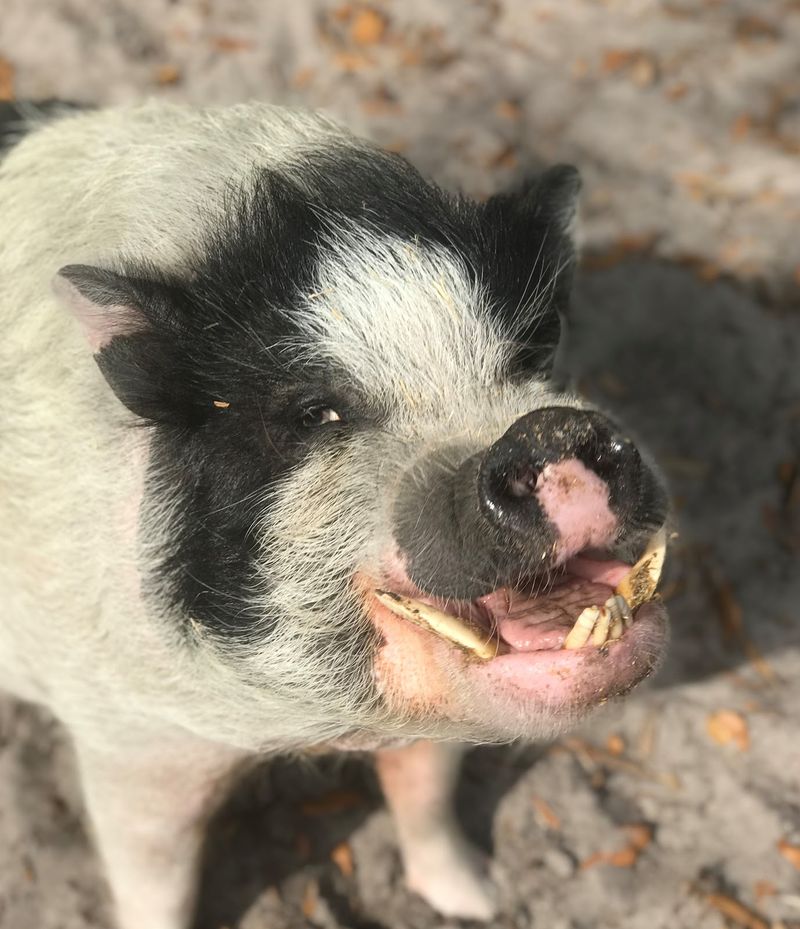
Those adorable potbellied house pigs require dental maintenance just like dogs and cats! As these pigs age, their teeth can develop tartar buildup and gum disease.
Responsible owners schedule regular veterinary dental checks. Some mini-pig enthusiasts even train their pets to accept tooth brushing with special animal toothpaste—though most pigs consider this an acquired taste rather than an immediate favorite!
9. Pig Teeth Keep Growing
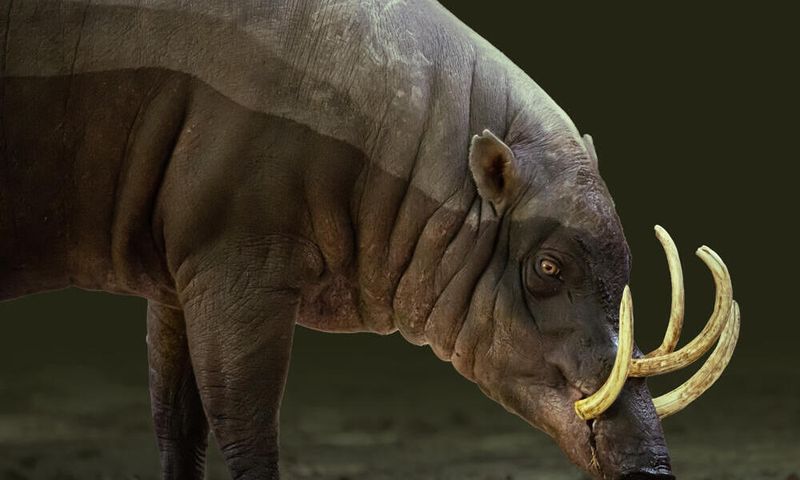
Unlike human teeth that reach a final size, certain pig teeth—particularly tusks—continue growing throughout their lives. Wild boars benefit from this continuous growth as their tusks wear down from constant use.
Domestic pigs retain this biological trait despite rarely needing it. In captive pigs without natural wear opportunities, these teeth can grow uncomfortably long, sometimes requiring veterinary intervention to prevent feeding difficulties.
10. Some Pigs Grind Their Teeth
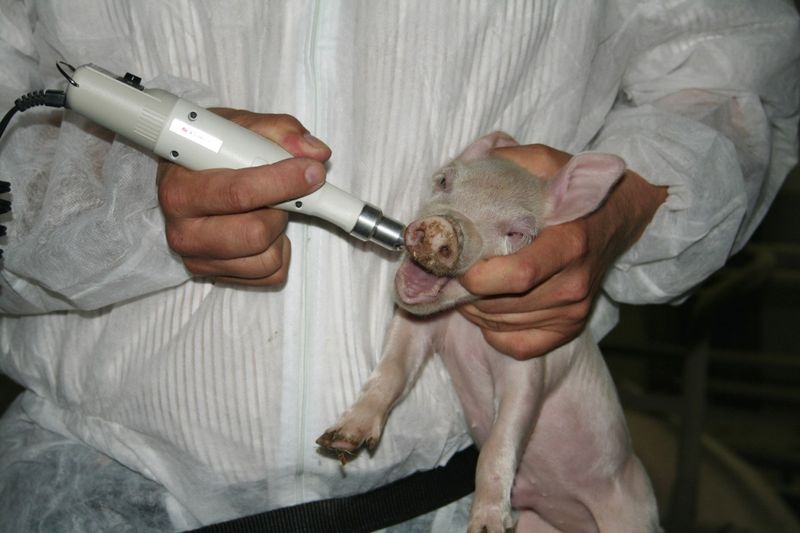
Listen carefully near a pig pen and you might hear an unusual sound—teeth grinding! This behavior, called bruxism, often signals stress or discomfort in pigs.
Farmers recognize this distinctive grinding as a warning sign of potential health issues. Pain, boredom, or anxiety can trigger this habit in pigs. Addressing the underlying cause quickly helps prevent dental damage from the constant friction.
11. Pig Teeth Have A Similar Shape To Human Molars

Researchers often do a double-take when comparing pig and human molars—they’re remarkably similar! Both feature broad, flat chewing surfaces with rounded cusps designed for grinding food.
This dental resemblance is one reason pigs serve as valuable research subjects for human dental studies. The comparable size and structure make pig teeth excellent models for testing dental materials and procedures before human application.
12. Teeth Can Reveal A Pig’s Age
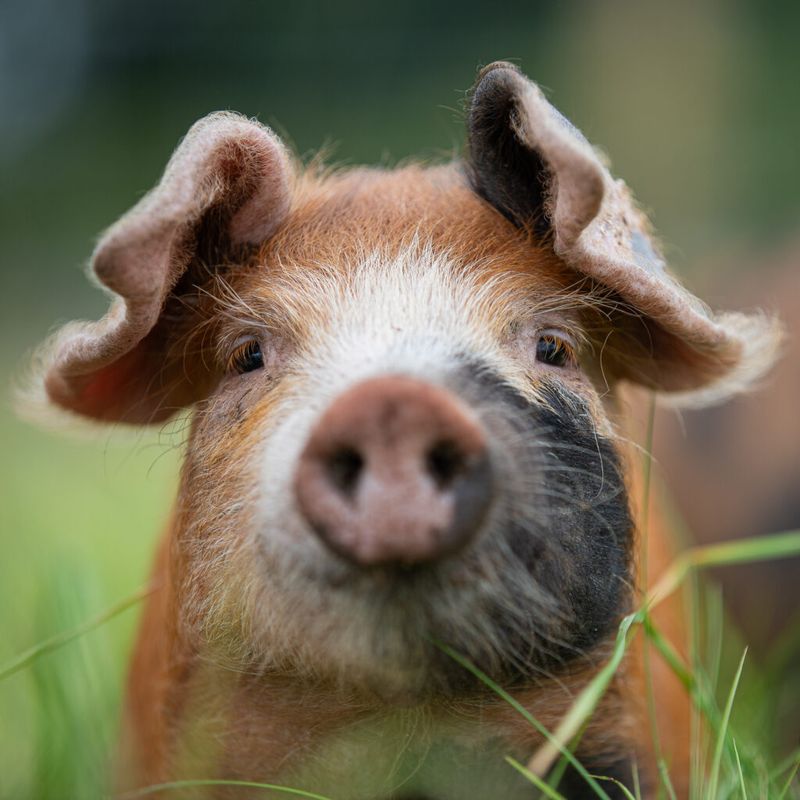
Farmers and veterinarians become dental detectives when determining a pig’s age! By examining which teeth have erupted and their wear patterns, experts can estimate how long a pig has been rooting around.
Young pigs develop their teeth in a predictable sequence. The process begins with those needle-sharp baby teeth and concludes with the emergence of third molars around 18-20 months—nature’s built-in calendar.
13. Wild Pigs Use Their Tusks For More Than Fighting
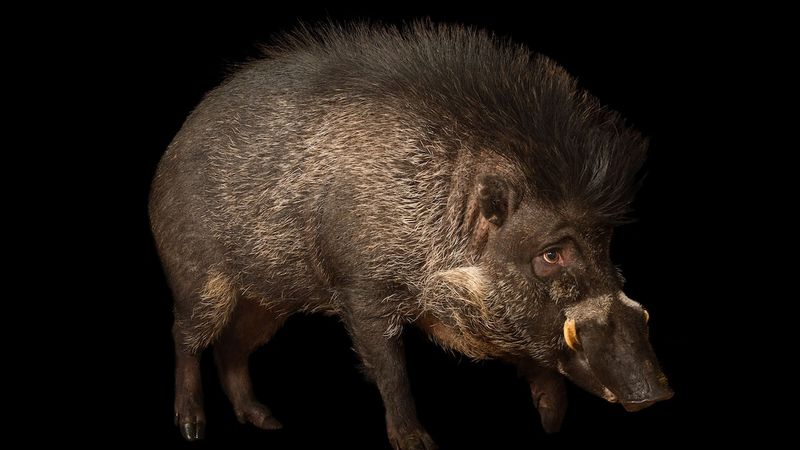
Those impressive tusks serve as multi-purpose tools in the wild! Boars use them to pry bark from trees, unearth nutritious roots, and break into tough-skinned fruits.
During mating season, males scratch trees with their tusks, leaving scent marks from special glands near their eyes. This territorial behavior creates visual and olfactory signposts. Female pigs also use their smaller tusks for digging and defending piglets.
14. Pig Skulls Are Studied In Forensics
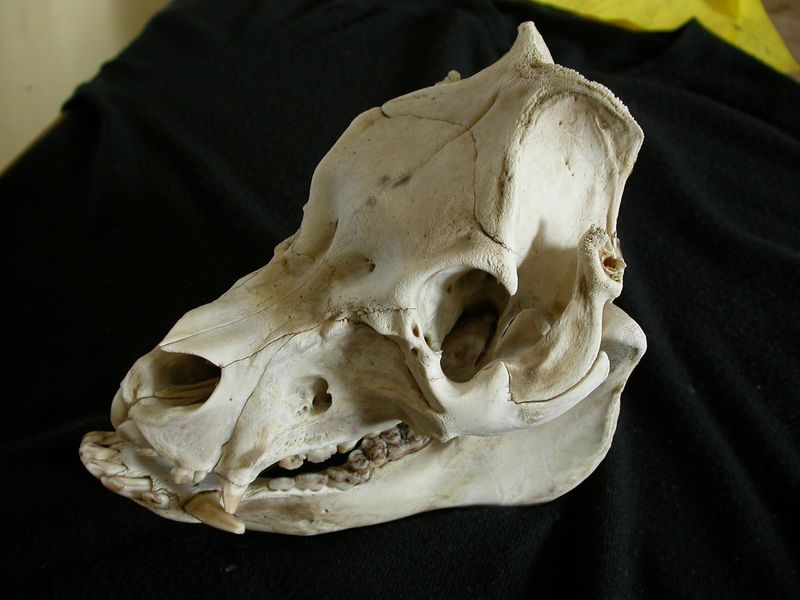
Crime scene investigators and forensic anthropologists often turn to pig remains for research. The remarkable similarities between pig and human dental structures make them invaluable for studying decomposition patterns and tooth marks.
Law enforcement training frequently involves pig specimens to teach identification of bite marks and postmortem dental changes. This porcine connection to criminal justice showcases how pig dentition contributes to human safety.


